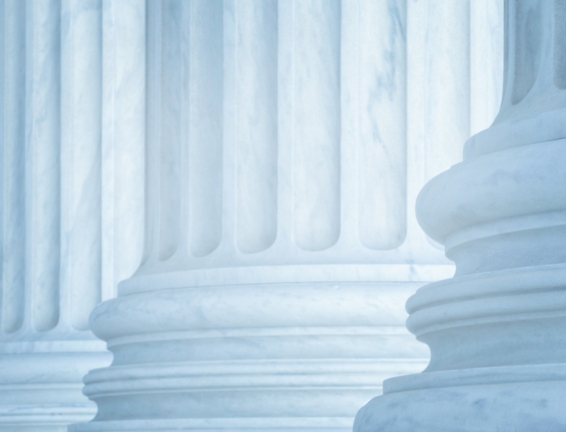Indiana Supreme Court: “Premises” Means Entire Parcel for State’s Church Liability Shield
Indiana statute protects worshipping communities from claims based on personal injuries sustained on their properties “used primarily for worship services.” The only duty owed to injured persons is to warn of hidden dangers of which it has actual knowledge and not to intentionally harm the person. So if someone gets hurt in a worship space, the religious organization very likely will have a quick exit from any lawsuit brought as a result. But what if the injury occurs elsewhere on property that also has a church building, like next to the parking lot? Is that still part of property used primarily for worship? The Indiana Supreme Court just unanimously answered “Yes.”
In Calvary Temple Church of Evansville, Inc. v. Kirsch, a church leader volunteered to build a new structure next to the church parking lot to store the new church van. While working on a ladder, he fell and sustained injuries serious enough to require surgery. He sued.
When the church pointed to Indiana’s statute shielding churches from most injury claims, the injured volunteer responded that the church didn’t use the part of its land he fell on to worship, so that statutory shield didn’t apply.
The Vanderburgh Superior Court agreed and decided to allow the man’s claims to move forward. The church appealed, and the Indiana Court of Appeals affirmed. It applied the statute apply only to the portions of the property used primarily for worship services.
But the Supreme Court disagreed. It concluded premises as used in the statute has an “expansive meaning,” which describes the entire parcel of land where the church worships. In reaching this conclusion, the Court looked to dictionary definitions of premises. It also compared the General Assembly’s choice of words in a similar section’s language, which protects religious organization’s childcare programs from liability. But that section applies only to “part of a building.” That demonstrates the legislature has singled out part of a church building in a very similar statute—and in the very next section of the Indiana Code. The Court found compelling evidence that the statute at issue applied broadly.
Finally, the Court noted that here the church uses the entire parcel for worship purposes. It warned that where a church might use parts of its parcel for purposes other than worship, the statue might not necessarily apply: “How a church uses its premises determines whether the statute applies.” But it did not provide detail about possible circumstances that might fit that description.
The statute at issue here is Ind. Code § 34-31-7-2.
Categorized: News

